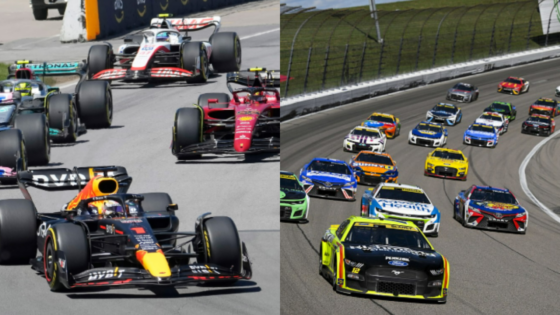Formula 1 grabs headlines with its movies and recently with a potential Apple deal. IndyCar’s new Fox deal, along with aggressive promotion, has led to an increase in viewership. But what about NASCAR, which has emerged as America’s top racing series? How is it growing and gaining popularity compared to other motorsports? If you are a stock car racing fan, then you know the answer. The NASCAR Commissioner, Steve Phelps, has also explained how the sport has proven remarkably effective in maintaining its viewership dominance.
In a recent conversation with John Ourand, Phelps didn’t just dismiss F1 and Roger Penske’s buzz; he laid out a clear case for NASCAR’s surprising viewership dominance. He also revealed how its Sunday races still triple F1’s American audience.
Why NASCAR isn’t chasing F1 or IndyCar
When asked if F1 and IndyCar, with their recent talks and media deals, are considered competitors to NASCAR, the 62-year-old replied, “I don’t think so. They’re in a different subset. If you go back five or six years, motorsports were struggling. F1 wasn’t doing very well. IndyCar wasn’t doing very well. We were in a slow, steady decline for about a decade. But since 2019, that’s changed. We celebrate F1’s success. We celebrate IndyCar’s success on Fox this year. It’s a positive thing if motorsports are growing. If you consider that we’re the top of the heap of motorsports domestically—and we are, by a wide margin—it’s a good thing.”
Phelps highlighted that NASCAR’s audience is different from F1’s, with only a 6% crossover. On the other hand, the crossover with IndyCar is higher, around 20%. He emphasized that F1 focuses on restricted access, whereas NASCAR prioritizes accessibility.
“We are different brands. F1 is all about restricted access. Ours is all about accessibility. Our fans can stand on pit road, where the cars are. The other part of accessibility is about the cost to attend a race. Going to an F1 race is incredibly expensive. Fans can get NASCAR race tickets for $30 to $50. Typically, parking is free. Fans can walk in with a cooler filled with their favorite beverages. That doesn’t mean that one is better than the other. It just means they’re different, with different audiences and different accessibility. We lean into the Americana that we are.”
Who’s winning the race for viewers?
F1 seizes global headlines and IndyCar sees a viewership surge, while NASCAR remains America’s most-watched motorsport. It’s not just about raw numbers; a significant shift in audience demographics is also in progress.
On June 1, 2025, NASCAR’s race from Nashville on Prime Video got 2.06 million viewers. This was more than F1’s race (Spanish Grand Prix with 1.17 million) and IndyCar’s race (Detroit Grand Prix with 1.06 million) on the same day. Overall, NASCAR’s first two races on Prime Video got 2.39 million viewers on average. F1’s average for the year so far is 1.33 million, and IndyCar’s is 1.77 million (their best since 2016).
A big win for NASCAR on Prime is its younger audience. Their viewers were about six years younger (median age 56.8) than NASCAR viewers on regular TV (62.8). This means more young adults are watching NASCAR on Prime Video. Even though the Nashville race had lower numbers than before, getting younger fans is a big deal for NASCAR’s future. As NASCAR successfully attracts a younger audience on Prime Video, will this demographic shift strengthen its long-term dominance against its increasingly popular rivals?
The post NASCAR Boss Brushes Off Roger Penske & F1’s Threat With Bold Claim appeared first on EssentiallySports.
